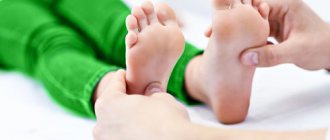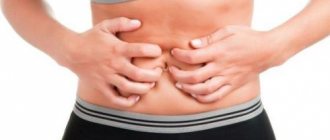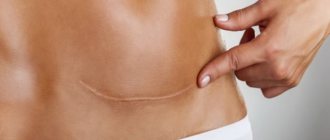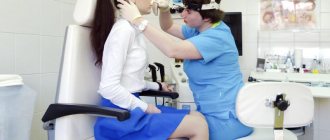Abdominal pain in children can have a variety of causes. There are pains caused by organic changes in the gastrointestinal tract. Abdominal pain can be caused by non-organic causes - these are functional disorders (colic in infants), psychosomatic pain, abdominal pain due to intolerance to any foods and, finally, abdominal pain that is not related to damage to the gastrointestinal tract (urinary tract infection , diabetes mellitus, enlarged mesenteric lymph nodes, spasm of mesenteric vessels, enlarged liver, spleen in hemoblastoses, and systemic diseases).
Abdominal pain associated with pathology of the gastrointestinal tract.
Acute abdomen is a state of catastrophe in the abdomen, characterized by severe pain, barely bearable, constant, aching or frequently recurring. This condition requires immediate medical attention!!! This picture is caused by appendicitis, cholecystitis, pancreatitis, suppuration of an ovarian cyst, bleeding into the abdominal cavity, intestinal obstruction, intussusception, peritonitis, and perforated gastric ulcer.
Alarm signals:
- Severe pain, the child cries and/or squirms;
- Persistence of pain for 2-4 hours, and even more so its increase;
- Feeling unwell, cold sweat, fainting;
- Confusion.
Before the doctor arrives, put the child to bed, do not disturb him or try to give him anything to eat or drink. REMEMBER: you cannot give painkillers (analgin, nurofen, paracetamol, efferalgan), offer the child a heating pad, an ice pack, laxatives, try to give an enema, all this can lead to a worsening of the child’s condition and, as they say, “blur the clinical picture,” thereby delay timely diagnosis and timely prescribed treatment.
Gastritis, stomach ulcer, gastroesophageal reflux. Gastritis is an inflammatory disease of the stomach wall, characterized by abdominal pain and dyspeptic disorders.
The etiological factor is often Helicobacter pylori infection.
Emotional lability (conflicts in the family, school, some kind of disaster, stressful situations), malnutrition, allergic processes predispose to the development of gastritis - all this leads to an increase in the acidity of gastric juice and creates favorable conditions for infection with the microbe Helicobacter pyloricus.
Most often, the pain syndrome is accompanied by dyspeptic disorders (nausea, belching, unstable stool, constipation). An important symptom is liver enlargement associated with stagnation of bile.
There are no symptoms of chronic intoxication and changes in other organs. Physical development corresponds to age. In some children, the main symptoms of the disease are liver enlargement without pain.
A good effect for improving well-being is provided by excluding too fatty, spicy, fried foods from the diet. The same applies to baked goods. Vegetable oil, on the contrary, increases bile secretion and is recommended to be consumed more often. If, in addition to the specified diet, you increase physical activity, this is often enough for recovery and well-being.
If diet and lifestyle changes are not enough, choleretic agents are used. Your doctor should recommend specific medications.
Enteritis, colitis (enterocolitis) is an inflammatory disease of the wall of the small and large intestines, characterized by abdominal pain and diarrhea syndrome.
Chronic colitis and enterocolitis are most often associated with acute infections. In this case, the pathogen that caused the disease has already lost its significance, and the dysfunction of the intestine is supported by those morphological changes that remain after the infection.
How can you help?
Everything is the same as for young children, but in addition you have the opportunity to fully discuss with your child his well-being.
A detailed survey can largely explain the etiology of the pain syndrome. Dear parents! In conclusion, it is important to emphasize that this article is for informational purposes only and reflects only the “tip of the iceberg” of the entire bouquet of possible pediatric pathologies accompanied by abdominal pain syndrome. Of course, abdominal pain can be caused not only by gastrointestinal diseases, but also by metabolic disorders, hematological diseases, the use of drugs and toxins, diseases of the liver, hepatobiliary tract, spleen, lungs, and diseases of the genitourinary system. But these cases are relatively rare, so attention is paid to common causes of abdominal pain.
It’s not for nothing that I started my story with the difficulties of diagnosing abdominal pain syndrome, even by an experienced doctor. In this matter, you need to remember one thing: it is better to seek specialized help in a timely manner than to regret the consequences in the future and deal with complications.
The child complains of pain in the upper abdomen.
Peptic ulcer of the stomach and duodenum is an inflammatory disease that occurs with ulcerations of the mucous membrane of the stomach and duodenum. The causes and predisposing factors are the same as for gastritis.
With gastritis and peptic ulcers, gastroesophageal reflux often occurs - acidic gastric juice enters the esophagus, which is manifested by belching, pain in the stomach after eating, and heartburn.
With peptic ulcers, these symptoms are more pronounced.
Alarm signals:
- Increased frequency and intensification of pain;
- Weight loss;
- Vomiting blood or coffee grounds.
In the treatment of gastritis and peptic ulcers, regular nutrition without overeating, the exclusion of irritating foods, the use of boiled, baked or lightly fried low-fat second courses, light dinners at least 2-3 hours before bedtime, the exclusion of sour juices and sweets are of great importance. The doctor prescribes an examination, diet and appropriate medications.
Diseases of the biliary system. Diseases of the biliary system in children, as a rule, are of microbial origin. Predisposing factors are a violation of the outflow of bile, which develops with dyskinesia of the biliary system.
Dyskenesia may be associated with dysfunction of the sphincter apparatus, blockage of the ducts or their compression. Subsequently, the presence of an inflammatory process in the ducts may be accompanied by a violation of the outflow of bile.
The contractility of the gallbladder is important.
The pain syndrome is usually accompanied by dyspeptic disorders (nausea, belching, unstable stool, constipation). An important symptom is liver enlargement associated with stagnation of bile.
There are no symptoms of chronic intoxication and changes in other organs. Physical development corresponds to age. In some children, the main symptoms of the disease are liver enlargement without pain.
A good effect for improving well-being is provided by excluding too fatty, spicy, fried foods from the diet. The same applies to baked goods. Vegetable oil, on the contrary, increases bile secretion and is recommended to be consumed more often. If, in addition to the specified diet, you increase physical activity, this is often enough for recovery and well-being.
If diet and lifestyle changes are not enough, choleretic agents are used. Your doctor should recommend specific medications.
Enteritis, colitis (enterocolitis) is an inflammatory disease of the wall of the small and large intestines, characterized by abdominal pain and diarrhea syndrome.
Chronic colitis and enterocolitis are most often associated with acute infections. In this case, the pathogen that caused the disease has already lost its significance, and the dysfunction of the intestine is supported by those morphological changes that remain after the infection.
The main clinical symptoms are abdominal pain, bloating and rumbling, impaired intestinal motility (constipation, diarrhea, or diarrhea alternating with constipation). Pain may be absent during the period of remission of the disease, but dysfunction of the intestines remains, which requires restorative treatment.
In addition, increased irritability, tearfulness, depressed mood, vascular dystonia syndrome, and a tendency to smooth muscle spasms are typical for these patients.
Rehabilitation consists of organizing nutrition according to the ability to absorb food, psychotherapy, the use of physiotherapeutic influences, and the use of astringents, enveloping, and absorbent agents. Recommendations on nutrition, daily routine, and medications can only be given by a doctor.
Instructions for parents
If every parent knew what a variety of diseases are hidden under the ordinary children’s complaint “stomach ache,” I would not be surprised that even the most experienced doctors sometimes puzzle over the causes of this symptom. What is this: reluctance to go to school or a symptom of a serious illness? When to sound the alarm? How can you help your child get rid of discomfort and pain faster?
The first question that parents are usually interested in is: what does the child feel when he complains of abdominal pain?
Let's start with the fact that pain is a subjective sensation that occurs as a result of exposure to irritants that cause various disorders in the body. Even the fetus has the ability to perceive pain. As a result, the child feels the same burning, whining, tingling, and stinging sensations as adults, but due to his age he cannot always describe them.
So how can you figure out what exactly is hurting your child’s stomach? To understand this, one article is not enough, but let’s try to highlight the main reasons for this condition.
The very first thing the doctor will pay attention to when examining your child is age. The diagnostic search is based on one algorithm in the case of a five-month-old baby and completely differently if a sixteen-year-old boy comes to the appointment. Therefore, I propose to consider the possible reasons and tactics of parents’ actions in each period of childhood.
Inorganic causes of abdominal pain.
Functional pain (colic in infants). Colic is paroxysmal pain in the abdomen, during which a child during the first 4 months of life screams loudly and “kicks” his legs. Colic occurs suddenly, the cry is loud and prolonged, the child’s face turns red, sometimes the feet become cold, and the hands are clenched into fists. The attack may end when the child is completely exhausted or after the passage of feces or gases.
Colic is most often caused by immaturity of the gastrointestinal tract. May be associated with errors in the diet of a nursing mother (dairy products, vegetables, nuts, coffee, grapes, etc.). Sometimes it is caused by the baby overeating or swallowing air during feeding. And sometimes, the causes of colic are more serious, for example, lactase deficiency leads to impaired digestion of milk sugar and causes increased fermentation of carbohydrates in the gastrointestinal tract. The development of intestinal dysbiosis, manifested by an increased growth of opportunistic flora and a decrease in normal microflora, leads to a violation processes of food digestion and also to increased fermentation processes in the intestines.
To prevent intestinal colic, a nursing mother must first of all follow a diet, completely excluding from the diet those foods that can lead to indigestion in the baby. Your pediatrician will tell you more about the diet. It is imperative that after feeding, and sometimes during feeding, the baby must be held vertically (“in a column”) to remove excess air that is swallowed during eating. If an attack of colic does occur in the baby, then the crying child should be picked up, pressed with his back to you, legs bent. Another option is to place him on your lap, tummy down. You can additionally place an ironed warm diaper under your stomach. A massage gives a good effect - stroking the tummy clockwise and using carminatives (dill water, plantex, etc.), you can use the installation of a gas outlet tube, all these activities help to release gases and stop colic and calm the baby.
To prevent colic or if the latter is caused by serious reasons, it is possible to prescribe drug therapy; your pediatrician will tell you what medications to give your baby in this case.
In any case, during an attack, especially the first one, the following diseases should be excluded:
- The presence of a tumor in the groin (strangulated hernia);
- Abdominal tension, pain, vomiting (“acute abdomen”).
Retention of stool for more than 1 day, blood in the stool (intestinal obstruction). In this case, an examination by a pediatrician, and sometimes a surgeon, is simply necessary.
It must be remembered that the child is examined by a pediatrician in the first month of life weekly, starting from the second month once every 14 days, then monthly. An examination by a surgeon is carried out in the first, third month of life and at 1 year, if there are no indications for more frequent consultations.
How and what to feed a child with “indigestion”?
There are a number of recommendations that can help with digestive problems in children3,4:
- A constant daily routine and food intake, when the body gets used to and promptly produces enzymes to digest food.
- Fractional meals - eating small portions up to 5 times a day to prevent overeating and maintain a routine.
- Chewing thoroughly and eating in moderation.
- Balanced food composition or compliance with doctor’s recommendations, if any.
- Gradual introduction of new products.
- Sufficient amount of water.
Naturally, it is not always possible to accomplish all this. But it’s better to try to follow these rules in order to improve your child’s digestion.










